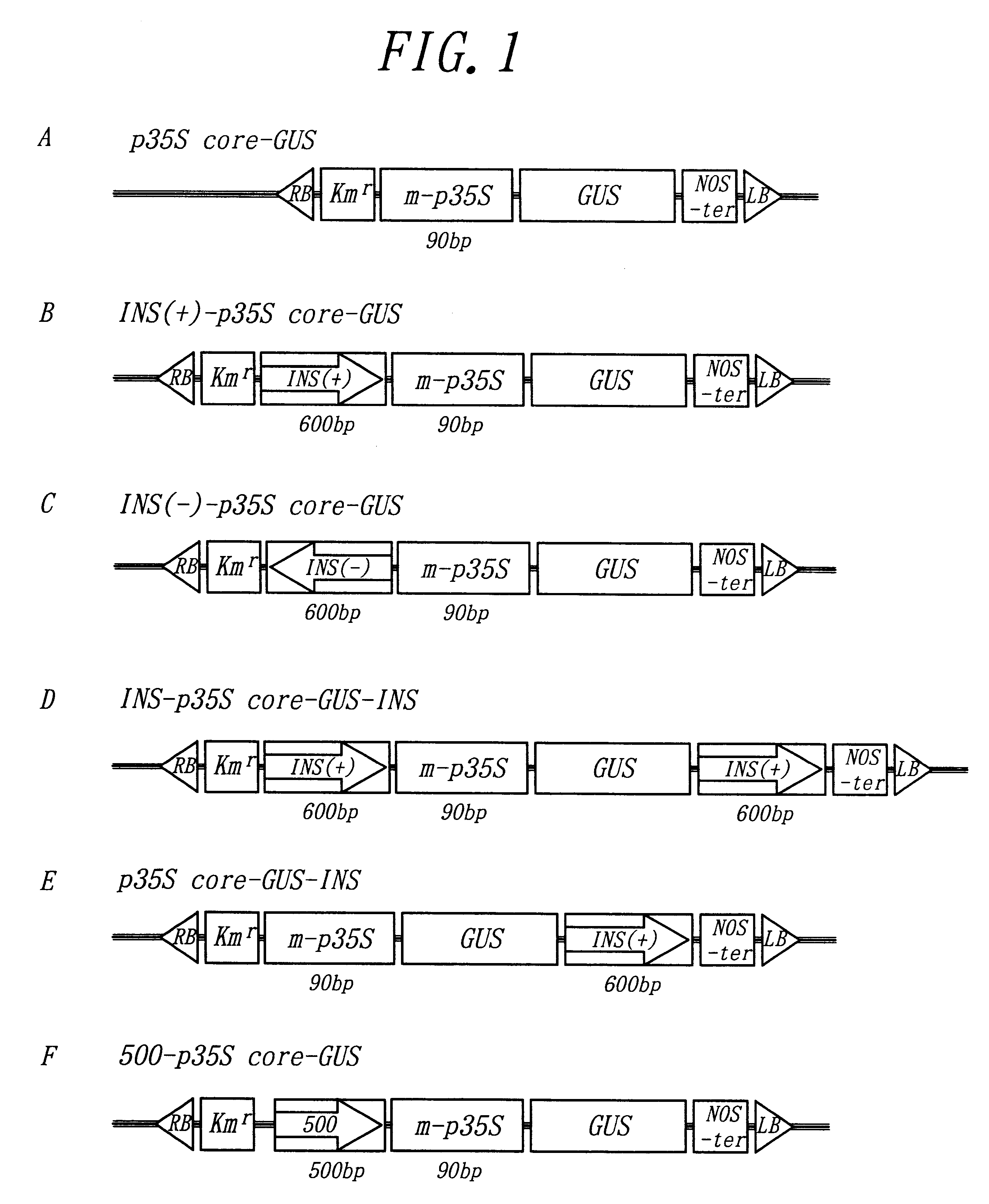Method of stable gene expression in a transgenic plant utilizing an insulator nucleotide sequence from the sea urchin arylsulfatase gene
a technology of arylsulfatase and insulator nucleotide sequence, which is applied in the field of gene transfer, can solve the problems of inability to generalize the technique using mar, inability to achieve stable expression of introduced genes in many cases, and inconsistent results of research performed by promoter genes or reporter genes
- Summary
- Abstract
- Description
- Claims
- Application Information
AI Technical Summary
Problems solved by technology
Method used
Image
Examples
Embodiment Construction
(Production of a Binary Vector Containing an Insulator)
In this experiment, upstream sequence (from -2686 to -2109) derived from sea urchin arylsulfatase (Ars) gene was used as an insulator. This sequence is described in Akasaka et al. Dev. Growth & Differ. (1994) 36:633-636. As a model promoter, a core promoter of cauliflower mozaic virus (CaMV) 35S promoter (90 bp) was used. Introduction of GUS fusion gene of conventional CaMV 35S core promoter into the chromosome of BY2 cell results in inactivation of the gene expression in high frequency. The existence of an intracellular threshold on the extent of mRNA accumulation and a mechanism for specific degradation of mRNA accumulated beyond the threshold have been reported. In addition to the position effect, the mRNA accumulation mechanism described above might be involved in the inactivation. The insulator alleviates the position effect by functioning as a boundary on a chromosome. But gene silencing caused by threshold of mRNA accumul...
PUM
| Property | Measurement | Unit |
|---|---|---|
| aaaaa | aaaaa |
Abstract
Description
Claims
Application Information
 Login to View More
Login to View More - R&D Engineer
- R&D Manager
- IP Professional
- Industry Leading Data Capabilities
- Powerful AI technology
- Patent DNA Extraction
Browse by: Latest US Patents, China's latest patents, Technical Efficacy Thesaurus, Application Domain, Technology Topic, Popular Technical Reports.
© 2024 PatSnap. All rights reserved.Legal|Privacy policy|Modern Slavery Act Transparency Statement|Sitemap|About US| Contact US: help@patsnap.com








